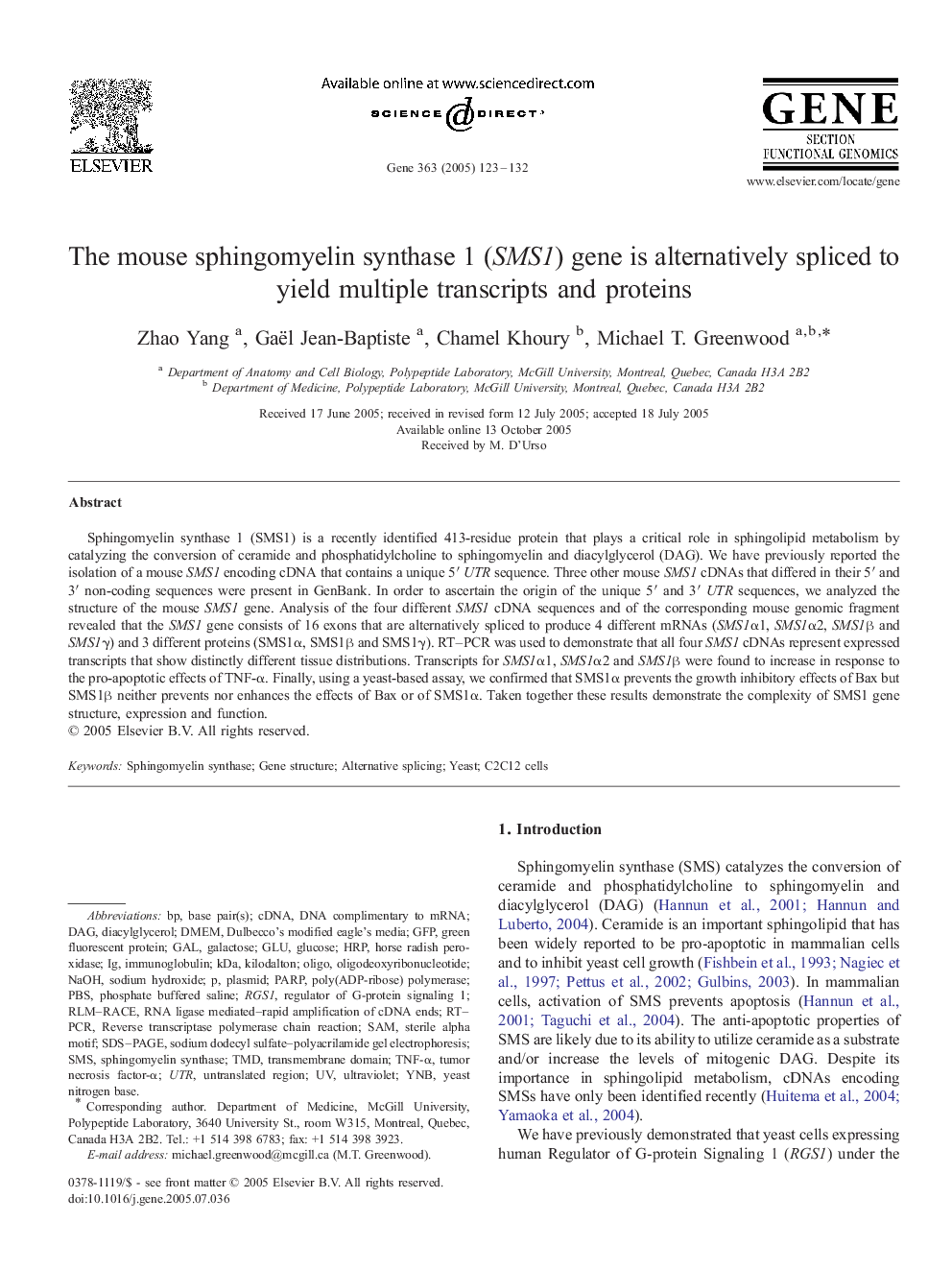| Article ID | Journal | Published Year | Pages | File Type |
|---|---|---|---|---|
| 9126874 | Gene | 2005 | 10 Pages |
Abstract
Sphingomyelin synthase 1 (SMS1) is a recently identified 413-residue protein that plays a critical role in sphingolipid metabolism by catalyzing the conversion of ceramide and phosphatidylcholine to sphingomyelin and diacylglycerol (DAG). We have previously reported the isolation of a mouse SMS1 encoding cDNA that contains a unique 5ⲠUTR sequence. Three other mouse SMS1 cDNAs that differed in their 5Ⲡand 3Ⲡnon-coding sequences were present in GenBank. In order to ascertain the origin of the unique 5Ⲡand 3ⲠUTR sequences, we analyzed the structure of the mouse SMS1 gene. Analysis of the four different SMS1 cDNA sequences and of the corresponding mouse genomic fragment revealed that the SMS1 gene consists of 16 exons that are alternatively spliced to produce 4 different mRNAs (SMS1α1, SMS1α2, SMS1β and SMS1γ) and 3 different proteins (SMS1α, SMS1β and SMS1γ). RT-PCR was used to demonstrate that all four SMS1 cDNAs represent expressed transcripts that show distinctly different tissue distributions. Transcripts for SMS1α1, SMS1α2 and SMS1β were found to increase in response to the pro-apoptotic effects of TNF-α. Finally, using a yeast-based assay, we confirmed that SMS1α prevents the growth inhibitory effects of Bax but SMS1β neither prevents nor enhances the effects of Bax or of SMS1α. Taken together these results demonstrate the complexity of SMS1 gene structure, expression and function.
Keywords
PBSDMEMNaOHoligodeoxyribonucleotidePARPGFPkiloDaltonSAMHRPkDacDNART–PCRSDS–PAGEoligoimmunoglobulin Base pair(s)diacylglycerolDulbecco's modified Eagle's mediaDAGPhosphate buffered salinesterile alpha motifsodium hydroxidereverse transcriptase polymerase chain reactionhorse radish peroxidasegreen fluorescent proteinPlasmidPoly(ADP-ribose) polymeraseGalGalactoseGluGlucose
Related Topics
Life Sciences
Biochemistry, Genetics and Molecular Biology
Genetics
Authors
Zhao Yang, Gaël Jean-Baptiste, Chamel Khoury, Michael T. Greenwood,
